An ever-shifting context of complexity, unpredictability, and volatility marks the global coffee industry. As Starbucks continues to expand and adapt, it faces many challenges driven by economic fluctuations, shifting societal values, technological disruptions, and environmental concerns.
Understanding these external forces is essential for strategic planning in such a turbulent environment. The PESTEL analysis model is the perfect tool to unravel this macro environment, thoroughly analyzing the Political, Economic, Social, Technological, Environmental, and Legal factors that influence Starbucks and shape its global operations.
Starbucks Overview

Starbucks is a global leader in the specialty coffee industry, known for its premium coffee offerings and unique customer experience.
Below is a detailed presentation of Starbucks, covering its history, activities, competitors, suppliers, customers, strategies, and key figures.
History
Starbucks was founded in 1971 in Seattle, Washington, as a single coffee shop selling high-quality beans and equipment.
The company began its transformation into a coffeehouse chain in the late 1980s under the leadership of Howard Schultz, who envisioned a café experience similar to those in Italy.
By the mid-1990s, Starbucks had expanded rapidly across the United States and internationally.
Activities
Starbucks operates as a specialty coffee roaster, marketer, and retailer. Its activities include:
Coffee Retailing: Selling brewed coffee, espresso drinks, teas, and snacks at its stores.
Product Diversification: Offering packaged coffee products through grocery stores and partnerships.
Digital Engagement: Utilizing mobile apps for ordering and loyalty programs to enhance customer experience.
Competitors
Starbucks faces competition from various companies in the coffee and beverage market:
- Dunkin’: Known for affordability and convenience, Dunkin’ has over 13,700 locations globally.
- McDonald’s McCafé: A significant player with over 41,000 locations offering competitive coffee options.
- Costa Coffee: A strong competitor in the U.K. with over 4,000 locations.
- Tim Hortons: A major Canadian chain with over 4,000 locations worldwide.
- Peet’s Coffee: Focuses on artisanal coffee blends and sustainability.
Suppliers
Starbucks sources its coffee beans from various suppliers worldwide. The company emphasizes ethical sourcing through its Coffee and Farmer Equity (C.A.F.E.) Practices program. This program ensures that suppliers adhere to environmental and social standards.
Customers
Starbucks primarily targets:
- Coffee Enthusiasts: Consumers seeking high-quality specialty beverages.
- Millennials and Gen Z: Younger demographics attracted to the brand’s experience-oriented approach.
- Business Professionals: Individuals looking for a comfortable space to work or meet.
Strategies
Starbucks employs several strategies to maintain its market position:
- Product Innovation: Continuously introducing new beverages and seasonal offerings to attract customers.
- Global Expansion: Increasing store presence in emerging markets like China and India.
- Sustainability Initiatives: Committing to eco-friendly practices and reducing carbon footprint.
Key Figures
As of 2024:
- Number of Stores: Approximately 39,000 locations worldwide.
- Sales Revenue: Estimated at $36 billion for fiscal year 2023.
- Countries Present: Starbucks operates in 78 countries globally.
- Market Share: Commands about 39.3% of the U.S. coffee market.
In summary, Starbucks has established itself as a dominant force in the global coffee industry through strategic expansion, product innovation, and a focus on customer experience. Its ability to adapt to market trends while maintaining brand loyalty continues to drive its success.
PESTEL analysis of Starbucks
We now turn to the results of Starbucks PESTEL analysis:
Political factors
The political environment significantly influences Starbucks’ growth and performance, encompassing various factors such as trade policies, labor regulations, tax laws, and geopolitical dynamics.
Trade Policies and International Relations
As a global entity, Starbucks’ operations are deeply affected by international trade policies and relations. The company sources coffee beans and other materials from multiple countries, making it susceptible to changes in tariffs, trade agreements, and import-export regulations.
For instance, trade policy fluctuations can impact coffee beans’ cost and availability, directly affecting Starbucks’ supply chain and pricing strategies.
In March 2024, Starbucks announced a new global leadership structure to balance a clear geographical focus with investing in functional capabilities to scale worldwide.
Tax Policies and Financial Implications
Taxation policies in various countries influence Starbucks’ profitability and expansion plans. Changes in corporate tax rates, tax regulations on overseas earnings, and local sales taxes can affect business decisions, including pricing and the location of new stores.
For example, favorable tax policies can provide cost savings and growth opportunities. In contrast, increases in corporate tax rates can reduce net profits and limit the ability to reinvest or expand operations.
Geopolitical Dynamics and Boycotts
Geopolitical tensions and conflicts can lead to consumer boycotts and impact Starbucks’ sales in certain regions. In June 2024, as the Israel-Hamas war in Gaza continued into its ninth month, American brands in the Middle East, including Starbucks, faced boycott campaigns due to accusations of supporting Israel.
Starbucks reported significant sales drops in the region, highlighting the sensitivity of its operations to geopolitical events and public perception.
Corporate Social Responsibility and Political Engagement
Starbucks’ commitment to corporate social responsibility (CSR) and political engagement also shapes its public image and stakeholder relationships.
The company has adopted policies to provide greater transparency regarding corporate political contributions and expenditures, reflecting its responsibility to advocate for policies that support the health of its business, partners, and communities.
In 2023, Starbucks outlined its public policy priorities at the U.S. federal, state, and local levels, supporting decision-making related to contributions and expenditures.
Economic factors
The overall economic climate is crucial in shaping Starbucks’ growth and performance. This includes consumer spending habits, inflation rates, currency changes, and the competitive landscape.
Consumer Spending and Economic Conditions
Consumer spending is a primary driver of Starbucks’ revenue. Economic downturns or periods of reduced consumer confidence can lead to decreased discretionary spending, affecting sales.
In the fiscal fourth quarter of 2024, Starbucks reported a 6% decline in U.S. comparable store sales, attributed to a 10% drop in transactions, indicating cautious consumer behavior.
Inflation and Cost Pressures
Rising inflation impacts both operational costs and consumer purchasing power. Increased raw materials, labor, and transportation costs can pressure profit margins. Starbucks has implemented cost control measures and operational improvements to mitigate these effects.
Despite these efforts, the company reported a 1% decline in net revenues to $9.1 billion in the third quarter of fiscal 2024.
Currency Fluctuations and International Operations
As a global company, Starbucks is exposed to currency exchange rate fluctuations, which can affect the profitability of its international operations. For instance, a stronger U.S. dollar can reduce the value of revenues earned in other currencies.
In the third quarter of fiscal 2024, Starbucks reported a 1% increase in net revenues on a constant currency basis, highlighting the impact of currency fluctuations.
Competitive Landscape and Pricing Strategies
The coffee industry is highly competitive, with numerous players vying for market share. In 2024, Starbucks faced intensified competition, particularly in China, where comparable store sales declined by 14%, driven by a 7% decrease in average ticket and transactions.
Starbucks has engaged in promotional activities and adjusted pricing strategies to remain competitive, including eliminating upcharges for non-dairy milk in North American stores starting November 7, 2024.
Supply Chain Disruptions
Global supply chain disruptions can affect the availability and cost of key inputs, such as coffee beans and packaging materials.
While specific recent disruptions are not detailed, ongoing global challenges necessitate that Starbucks maintain robust supply chain management to ensure consistent product availability and cost control.
Social factors
The social and cultural macro environment significantly influences Starbucks’ growth and performance, encompassing evolving consumer preferences, demographic shifts, cultural trends, and societal values.
Evolving Consumer Preferences and Health Consciousness
Modern consumers increasingly prioritize health and wellness, seeking products that align with their dietary choices and ethical considerations. Starbucks has expanded its menu to include plant-based options and healthier alternatives.
Notably, starting November 7, 2024, Starbucks will eliminate the extra charge for plant-based milk in its U.S. and Canadian stores, making dairy-free options more accessible and appealing to health-conscious customers.
Cultural Trends and the Experience Economy
The rise of the experience economy has led consumers to value unique and personalized experiences over mere products. Starbucks has adapted by enhancing its in-store ambiance and customer engagement.
Under CEO Brian Niccol’s leadership, the company plans to reintroduce ceramic mugs, comfortable seating, and personalized service elements to create a more inviting atmosphere, aiming to recapture the essence of a community-focused coffeehouse.
Demographic Shifts and Urbanization
Urbanization and changing demographics influence Starbucks’ market strategies. The company continues to expand in urban centers, catering to a diverse and dynamic customer base. Starbucks has faced challenges in China due to increased competition and economic factors.
To address this, Starbucks is focusing on tailoring its offerings and store experiences to meet the preferences of urban consumers in various markets.
Societal Values and Corporate Social Responsibility
Consumers are increasingly attentive to corporate social responsibility (CSR) and expect companies to align with societal values. Starbucks has committed to various CSR initiatives, including environmental sustainability and ethical sourcing.
The company’s 2020 Global Environmental and Social Impact Report highlights efforts such as distributing 50 million coffee trees to farmers and training over 200,000 farmers to promote sustainable practices.
Cultural Sensitivity and Global Expansion
As Starbucks expands globally, cultural sensitivity becomes crucial. The company adapts its products and store designs to resonate with local cultures.
For example, in South Korea, Starbucks has incorporated traditional Korean elements into its store designs and collaborated with local artists to create culturally relevant experiences, enhancing its appeal to local consumers.
In summary, Starbucks’ growth and performance are deeply intertwined with social and cultural factors. Starbucks aims to navigate the complexities of the social and cultural landscape in the coming years by staying attuned to changing consumer preferences, embracing cultural trends, and demonstrating a commitment to societal values.
Technological factors
Digital Platforms and Mobile Integration
Starbucks has significantly invested in its digital ecosystem to enhance customer engagement and streamline operations. The Starbucks mobile app, featuring Mobile Order & Pay, allows customers to order ahead and pick up their beverages seamlessly, reducing wait times and improving convenience.
This digital integration has increased customer loyalty and higher transaction volumes, as evidenced by the substantial growth in mobile orders over recent years.
Automation and Operational Efficiency
Starbucks has implemented automation technologies within its stores to improve efficiency and reduce operational costs. The introduction of the Siren System, an advanced espresso machine, has streamlined beverage preparation, allowing baristas to focus more on customer interaction.
Additionally, the company has explored automated ordering systems and inventory management solutions to optimize supply chain operations and minimize waste.
Artificial Intelligence and Personalization
Leveraging AI, Starbucks has enhanced its ability to personalize customer experiences. The Deep Brew initiative utilizes machine learning algorithms to analyze customer preferences and purchasing behaviors, enabling tailored recommendations and promotions.
This personalization fosters customer loyalty and drives sales by offering relevant product suggestions and exclusive offers.
Sustainability Innovations
Technological advancements have also facilitated Starbucks’ sustainability efforts. The company has developed new cup designs with reduced plastic content and introduced reusable cup programs to minimize environmental impact.
Furthermore, Starbucks has invested in energy-efficient equipment and renewable energy sources to reduce its carbon footprint, aligning with global sustainability goals and appealing to environmentally conscious consumers.
Supply Chain Digitization
Starbucks has embraced supply chain digitization to enhance transparency and efficiency. By implementing blockchain technology, the company provides customers with information about the origin of their coffee beans, promoting ethical sourcing and building consumer trust.
This technological integration ensures product quality and supports fair trade practices, reinforcing Starbucks’ commitment to social responsibility.
In recap, Starbucks’ strategic adoption of technological advancements across various facets of its operations positions the company for sustained growth and enhanced performance in the coming years.
Environmental factors
The environmental elements significantly influence Starbucks’ growth and performance. According to our investigation, we have found the following factors:
Climate Change and Coffee Production
Climate change poses a substantial threat to coffee cultivation, affecting the quality and availability of coffee beans. Rising temperatures and unpredictable weather patterns can lead to reduced yields and increased susceptibility to pests and diseases.
Starbucks has committed to donating 100 million disease-resistant coffee trees to farmers by 2025 to mitigate these risks, aiming to enhance crop resilience and ensure a stable supply chain.
Resource Scarcity and Sustainable Sourcing
The depletion of natural resources necessitates sustainable sourcing practices. Starbucks has set a goal to source and verify 100% of its coffee through C.A.F.E. Practices, an ethical sourcing program, to promote environmental stewardship and support farming communities.
This commitment secures the company’s supply chain and aligns with consumer expectations for responsibly sourced products.
Waste Management and Packaging Innovations
Addressing waste, particularly from single-use packaging, is a critical environmental concern. Starbucks has introduced redesigned cold cups containing up to 20% less plastic, projected to keep over 13.5 million pounds of plastic out of landfills annually.
Additionally, the company is testing reusable and returnable cup models to reduce waste further and promote a circular economy.
Sustainability Initiatives and Corporate Responsibility
Starbucks aims to become resource-positive by storing more carbon than it emits, replenishing more freshwater than it uses, and eliminating waste. The company has set targets to cut its carbon, water, and waste footprints in half by 2030.
These initiatives address environmental challenges, enhance brand reputation, and meet the growing consumer demand for sustainable business practices.
Regulatory Compliance and Environmental Policies
Compliance with environmental regulations is essential for Starbucks’ operations. The company must adhere to various environmental laws and policies across different markets, which can influence operational costs and strategic decisions.
Proactive engagement in ecological policy discussions and adherence to regulations help mitigate risks and ensure business continuity.
Legal factors
Labor Laws and Unionization Efforts
Labor laws and regulations are crucial in shaping Starbucks’ workforce management and operational costs. The company has faced significant unionization efforts, with nearly 10,000 workers in more than 400 U.S. stores choosing Starbucks Workers United as their representative since December 2021.
In February 2024, after over two years of protests, Starbucks agreed to begin collective bargaining with the union. This development underscores the impact of labor regulations and union activities on the company’s operations and labor relations.
Regulatory Compliance and Health Standards
Compliance with health and safety regulations is crucial for Starbucks, especially in the food and beverage industry. The company must adhere to stringent standards to ensure product safety and quality. Any lapses can lead to legal penalties and damage the brand’s reputation.
For instance, in 2023, Starbucks faced scrutiny over its handling of health protocols during the COVID-19 pandemic, highlighting the importance of regulatory compliance in maintaining consumer trust.
Intellectual Property Rights and Brand Protection
Protecting intellectual property is vital for Starbucks to safeguard its brand identity and proprietary products. The company actively monitors and enforces its trademarks and patents to prevent infringement.
In recent years, Starbucks has engaged in legal actions against entities attempting to imitate its branding or products, ensuring the preservation of its market position and consumer loyalty.
Litigation and Legal Challenges
Starbucks has encountered various legal challenges that can affect its financial performance and public image. In March 2024, the company faced a class-action lawsuit alleging discrimination against lactose-intolerant customers due to surcharges for non-dairy milk options.
The lawsuit argued that the surcharge violated the Americans with Disabilities Act (ADA), as lactose intolerance is recognized as a disability affecting millions of Americans. Such legal disputes necessitate careful navigation to mitigate financial liabilities and uphold corporate reputation.
Environmental Regulations and Sustainability Compliance
Adherence to environmental laws is increasingly important as consumers and governments emphasize sustainability. Starbucks has committed to reducing its ecological footprint, including initiatives to eliminate single-use plastics and reduce carbon emissions.
Compliance with environmental regulations avoids legal penalties, aligns with consumer expectations, and enhances brand value.
Starbucks Pestle analysis summary
Here’s a summary table of Starbucks’ PESTEL analysis:
| PESTEL Factors | Opportunities | Threats |
| Political | Expansion in regions with favorable trade policies; Supportive government policies on CSR. | Unionization efforts and labor regulations; Geopolitical tensions impacting operations. |
| Economic | Rising demand for premium coffee experiences; Growth potential in emerging markets. | Inflation increasing operational costs; Currency fluctuations affecting global revenues. |
| Social | Increasing consumer interest in plant-based and healthy options; Demand for personalized customer experiences. | Cultural shifts and evolving consumer preferences; Declining sales in markets like China due to economic conditions. |
| Technological | Advancements in AI for personalized experiences; Enhanced mobile and digital engagement. | High costs associated with technological innovations; Cybersecurity risks and reliance on digital infrastructure. |
| Environmental | Sustainability initiatives aligning with consumer values; Innovations in waste reduction and energy efficiency. | Climate change affecting coffee bean supply; Regulatory pressures for environmental compliance. |
| Legal | Strengthened brand protection through intellectual property laws; Opportunities for proactive compliance and CSR activities. | Legal disputes impacting brand reputation and financials; Increased regulatory scrutiny and evolving health standards. |
Conclusion
In conclusion, Starbucks’ PESTEL analysis reveals a complex macro environment filled with opportunities and threats.
To successfully seize emerging opportunities, Starbucks should continue investing in its sustainability initiatives, such as sourcing 100% ethically produced coffee and advancing innovations like reusable cup programs to align with growing environmental concerns.
Expanding its digital and AI-driven platforms will be crucial for enhancing customer personalization and engagement, helping to capture the tech-savvy, experience-driven market segment.
Moreover, strategic geographic expansion into regions with favorable trade policies and economic growth potential can drive revenue while diversifying risk.
Also, Starbucks must adopt a proactive approach to labor relations to counter existing threats, balancing unionization demands with its commitment to partner welfare.
Robust cost management strategies, like optimizing supply chains and adjusting pricing models, will help mitigate the impacts of inflation and currency fluctuation.
Finally, the company should maintain vigilance over geopolitical developments and adapt quickly to protect its operations in politically volatile regions.
Read also: SWOT analysis of Starbucks in 2024.
PESTEL analysis examples 2024
To better understand the PESTEL analysis, we invite you to read our recent free examples of the Pestel framework.
PESTEL analysis of Air Canada
Click here to read our example of Air Canada PESTEL analysis.
PESTEL analysis of Canadian Tire
Click here to read our example of Canadian Tire PESTEL analysis.
PESTEL analysis of Tim Hortons
Click here to read our example of Tim Hortons PESTEL analysis.
PESTEL analysis of Canada
Click here to read our example of Canada PESTEL analysis.
PESTEL analysis of Asda
Click here to read our example of Asda PESTEL analysis.
PESTEL analysis of Tesco
Click here to read our example of Tesco PESTEL analysis.
PESTEL analysis of Lululemon
Click here to read our example of Lululemon PESTEL analysis.
PESTEL analysis of China
Click here to read our example of China PESTEL analysis.
PESTEL analysis of Coca-cola
Click here to read our example of Coca-cola PESTEL analysis.
PESTEL analysis of British Airways
Click here to read our example of British Airways PESTEL analysis.
PESTEL analysis of Primark
Click here to read our example of Primark’s PESTEL analysis.
PESTEL analysis of Zara
Click here to read our example of Zara’s PESTEL analysis.
PESTEL analysis of DHL
Click here to read our example of DHL’s PESTEL analysis.
PESTEL analysis of FedEx
Click here to read our example of FedEx’s PESTEL analysis.
PESTEL analysis of Chipotle
Click here to read our example of Chipotle’s PESTEL analysis.
PESTEL analysis of Brazil
Click here to read our example of Pestel’s analysis of Brazil.
PESTEL analysis of Spotify
Click here to read our example of Spotify Pestel analysis.
Chick-fil-A PESTEL Analysis
Click here to read our example of Chick-fil-A Pestel analysis.
Costco PESTEL Analysis
Click here to read our example of Costco Pestel analysis.
Microsoft PESTEL Analysis
Click here to read our example of Microsoft Pestel analysis.
Disney PESTEL Analysis
Click here to read our example of Disney Pestel analysis.
Airline Industry PESTEL Analysis
Click here to read our example of the Airline industry Pestel analysis.
Walmart Pestel Analysis
Click here to read our example of Walmart Pestel analysis.
Amazon Pestel Analysis
Click here to read our example of Amazon Pestel analysis.
McDonald’s Pestel Analysis
Click here to read our example of the Netflix Pestel analysis.
Netflix Pestel Analysis
Click here to read our example of the Netflix Pestel analysis.
Apple Pestel Analysis
Click here to read our example of the Apple Pestel analysis.
Twitter Pestel Analysis
Click here to read our example of the Twitter Pestel analysis.
Facebook Pestel Analysis
Click here to read our example of the Facebook Pestel analysis.
Pestel analysis of the Social Media industry
Click here to read our example of the Pestel analysis of the Social Media industry.
Ikea Pestel Analysis
Click here to read our example of the IKEA Pestel analysis.
Tesla Pestel Analysis
Click here to read our example of the TESLA Pestel analysis.

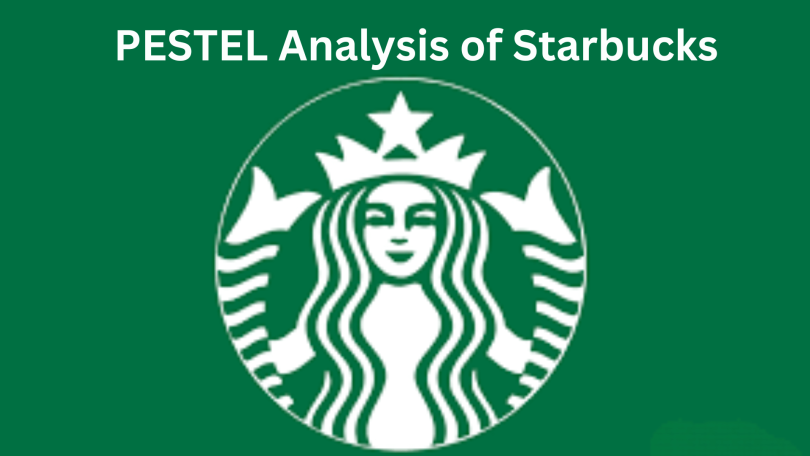

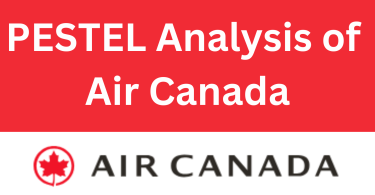
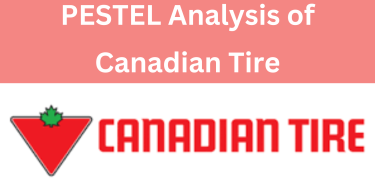
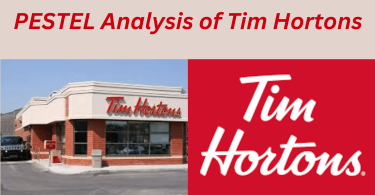
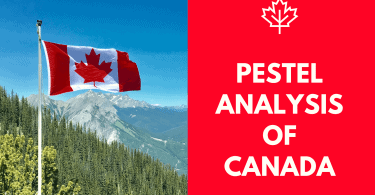

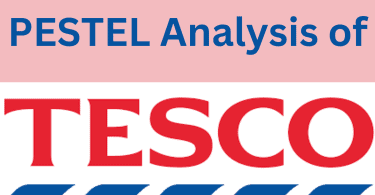

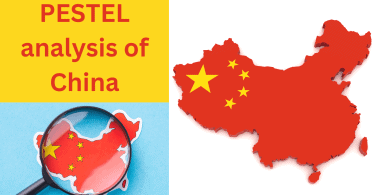
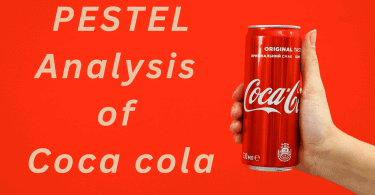
Leave a Comment